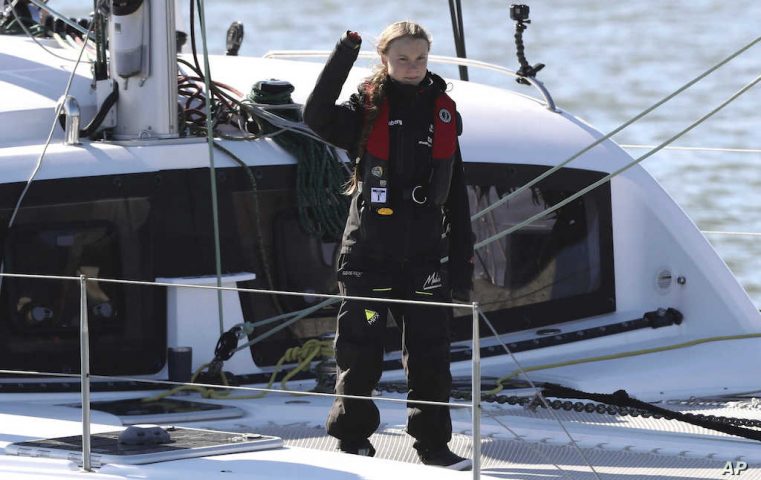What can Greta Thunberg’s Trans-Atlantic Sail Teach Us about Business Travel?

How to make your office more sustainable: 22 steps for positive change
February 6, 2020
Plant a Tree
February 17, 2020
The trans-Atlantic sailing trip of one Swedish teenager led the headlines in the summer of 2019. Debate raged over zero-carbon status of the trip – but can Greta Thunberg’s example teach us anything about travel best-practice in a business context?
It seems strange that one Swedish campaigner who is taking the findings of the scientific community about climate change to a wider audience should be subject to so much controversy.
The cynicism is led by disbeliever in Chief, US President Donald Trump.
Media outlets seem equally sceptical. Sky News questioned the “zero carbon” status of the trip, concluding regardless of its carbon status (zero) the boat’s construction cost of upwards of €4m meant the average traveller could not afford a similar trip.
But have all these commentators missed the point?
Thunberg herself has said, “There’ll always be people who don’t understand or accept the science. I’ll ignore them. Climate delayers want to shift the focus from the climate crisis to something else.”
When International Climate Talks were scheduled to take place in New York, the influential teenage environmental activist decided to make the journey to help bring some of her growing influence to bear on proceedings.
This meant making a voyage across the Atlantic on board an 18-metre racing yacht, the Malizia II, kitted out with solar panels and underwater turbines.
A demonstration of values
The voyage is a demonstration of Thunberg’s declared values, which revolve around reducing emissions. While flying to New York would have been much quicker, it would pump close to 1,000kg of carbon dioxide into the atmosphere. Conventional cruise ships weren’t an option either; they often have an even bigger carbon footprint.
Instead, Thunberg chose to travel on the Malizia to highlight the way today’s society is not geared up to address the climate challenge.
She told the New York Times, “I decided to sail to highlight the fact that you can’t live sustainably in today’s society. You have to go to the extreme.”
The trip certainly was extreme; the was no kitchen or toilets on board. And the 3,500 nautical mile journey lasted 15 days; setting sail from Plymouth in the UK on August 14, 2019 and reaching New York City on August 28.
Although these extreme measures really have no place in business travel, can Thunberg’s decision to travel in this way teach us anything about our own travel responsibilities?
Think about your own travel responsibilities
Certainly, it does suggest that we need to pose ourselves some hard questions before making travel arrangements:
- Is it really necessary to make this trip?
- Could we achieve our objectives in any other way?
- Could the meeting take place over digital methods e.g. video conferences, virtual events?
- If it is absolutely necessary to travel, what are the carbon costs of each potential method of travel?
- Is there a way to reduce the carbon output for any of these methods?
- How can we put in place policies and processes that make it easy to offset the carbon costs of each journey?
- If it is necessary to fly: choose a direct route, pack light and don’t travel business or first class.
- Can we host the event or meeting in an eco-friendly venue? Can we book eco-hotels and switch to other eco-friendly resources?
However, as Thunberg’s trip so clearly illustrates in order to be truly green, travel today requires us to take extreme measures.
The best way to reduce our emissions and carbon footprint is simply not to make the journey at all.
However, some trips do need to take place. It would be a sad day indeed if we were no longer able to travel and experience other places and cultures.
This means we also all have a responsibility to lobby governments and travel providers to ensure they change their infrastructure and make it possible to choose greener ways of travel and switch to a zero-carbon economy.
Perhaps Thunberg’s trip most clearly illustrates that we can all make choices; but we need to combine this with lobbying for better solutions so it is easier to make the right choice.




